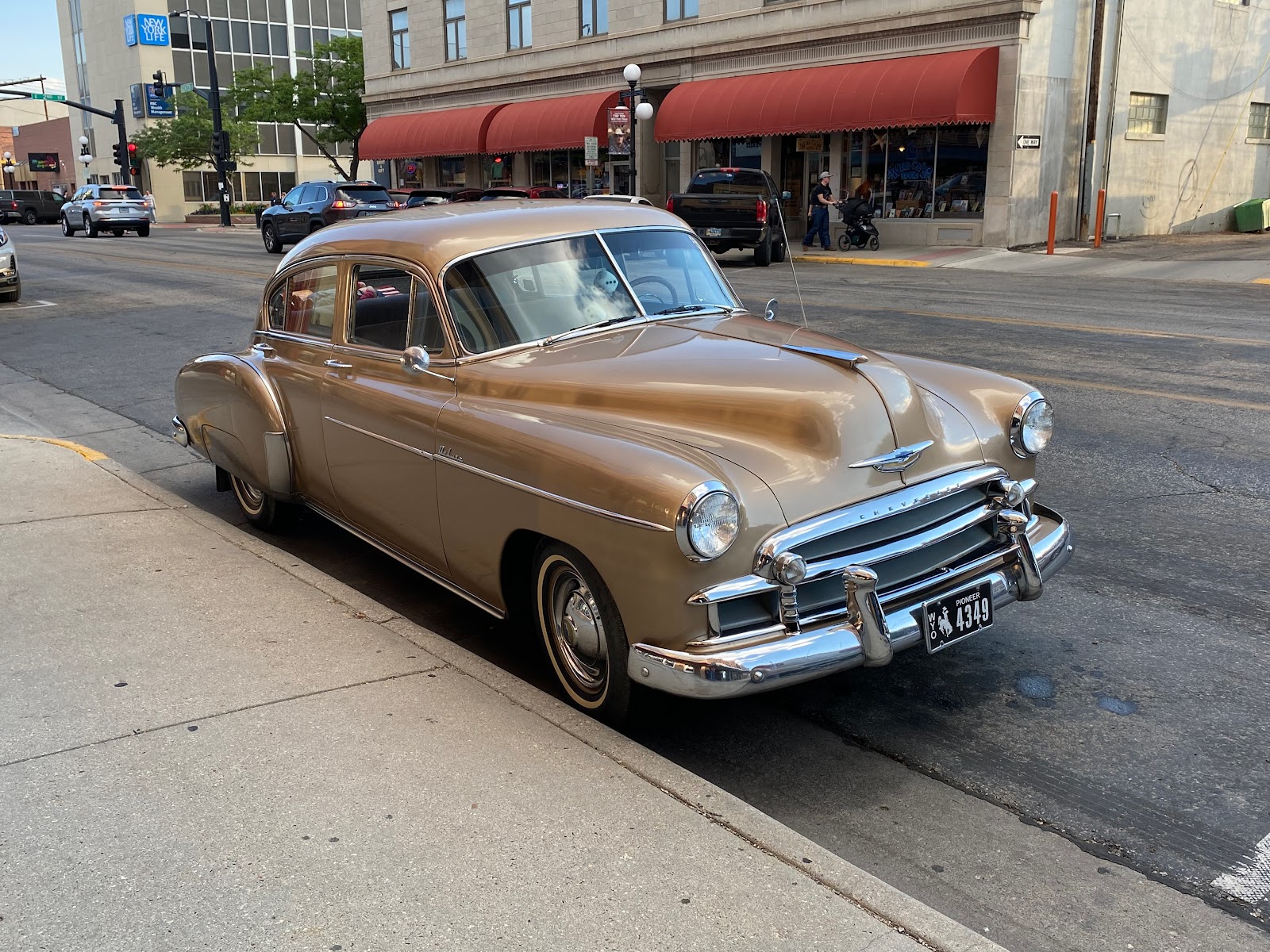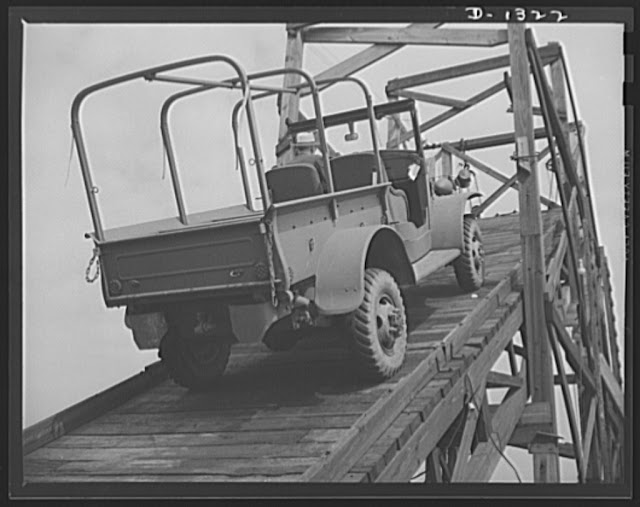Ostensibly exploring the practice of law before the internet. Heck, before good highways for that matter.
Sunday, August 21, 2022
Some old ones.
Monday, November 15, 2021
Tuesday November 15, 1921. A gift of a truck.
Thursday, September 30, 2021
Friday, September 30, 1921. Moving the founding documents.
Moving the US Constitution.
On this day in 1921 the Constitution and Declaration of Independence were moved from where they were residing to their present locations.
Also on this day:
Brattleboro VT High School Radio Club, 1UT, 1921
Sunday, August 1, 2021
Friday August 1, 1941. New things.
The United States Navy was about to get a brand new, and very advanced, torpedo bomber in the form of the Grumman TBF.
Jeeps, I'd note, are so associated with the American military of World War Two that even movies made close in time to actual events, such as They Were Expendable, often mistakenly show them in use very early in the war. In actuality, when World War Two broke out for the United States, the Jeep was so new that there were none of them in the Pacific Theater.
Wednesday, July 28, 2021
The Olympic Pickup Advertisements. Walter and the Lightening.
Friday, April 23, 2021
Dazzling urbanites. . . buy a car.
The reply to my "Dear Dodge, do you make any manual transmission trucks":
Hello Mr. Yoeman,
I’d like to thank you for reaching out to the Ram Truck Information Center to express your feedback regarding our Ram vehicle lineup. We remain committed to a complete customer satisfaction experience and I appreciate the time taken to express and share your comments and concerns with us.
We recognize the diverse needs and expectations that can exist within our Ram Truck family when considering their next vehicle purchase. We are constantly evaluating our Ram Truck lineup to make sure we are meeting these needs and preferences, both by customer inquiries & comments such as yourself, as well as our vehicle sales statistics.
Comparable to other truck manufacturers in the North American retail marketplace, the Ram Truck brand has decided to conclude production of the Manual Transmission for both our light duty and heavy duty Ram Truck lineups due to low consumer demand.
We will continue to evaluate our lineup based on consumer trends, feedback, and preferences offered through a variety of purchasing resources. Rest assured, your interest and feedback has been noted.
Please feel free to sign up for updates on the Ram Truck brand by visiting https://www.ramtrucks.com/sufu.html -or, staying in touch with your local Ram Truck Dealer:
By signing up, you will receive a quarterly eNewsletter with updates and information as it becomes available on new vehicles, special offers, upcoming events, and more.
If you have any additional questions or concerns, please contact us at 1-866-726-4636.
Thank you for your interest, Patrick.
Sincerely,
Jeff
Ram Truck Information Center
In other words, the trucks are bought by urbanites and soccer moms/soccer dads who really want cars, so we don't make trucks anymore.
Sigh
Friday, April 16, 2021
Monday, April 12, 2021
Lancaster PA, 1946. Bob Hess Dodge Plymouth receiving a shipment of new vehicles.
Friday, April 9, 2021
April 9, 1921. Meetings
The President and First Lady (and indeed the VP and his wife) had a busy day of meetings on this Saturday, April 9, 1921.
And they also met with the Mexican Chamber of Commerce, something that was done, of course, against the background of the still uncertain outcome of the recent Mexican Revolution, and the accompanying uncertainty over how far to the left the new Mexican government would take that nation and its economy.
An advertisement for Oldsmobile trucks appeared in the Country Gentleman.
This is interesting in that it featured a Western sheep rancher in an era in which sheep ranches, which were a major ranching endeavor in the West, still was mostly horse powered in every fashion. Oldsmobile was suggesting that some of that could be taken over by trucks.
Tuesday, March 30, 2021
Saturday, March 20, 2021
Blog Mirror: 1921 Recreational Vehicles
On Saturdays I try to post something outdoorsy here, although like most of my scheduled periodicals, I miss doing that quite a bit. Indeed, recently this blog has been a bit overrun with politics, as it seems the country is a bit overrun by politics.
Anyhow, I saw this interesting item:
1921 Recreational Vehicles
It's that time of year, sort of, depending up where you live (we're still getting snow) where you start to think of such things. I've often wondered when the first RVs came about. Pretty early, it would appear.
Wednesday, December 30, 2020
Mid Week At Work: Vermont State Trooper, 1936
Some states have state troopers, some have highway patrolmen. In any event, this week's reflection on work is put up noting the dedication of the first freeway in the United States on this date in 1940, four years after this photo was taken across the country.
Tuesday, December 8, 2020
Those Tires. Was, Lex Anteinternet: The Week. Old Injuries and Old Addictions (Coffee...
Man these tires are massive. And they sure look like radials, even though they can't be.
Saturday, November 14, 2020
Wednesday, August 12, 2020
Friday, May 29, 2020
May 29, 1920. Good Roads Week.
Sunday, April 19, 2020
Moving stuff around. The Pandemic
I'm talking about the newspaper.
I subscribe to the local newspaper, but as I've noted here several times before, that local paper contracted out the printing of the paper to a printer in Cheyenne. I don't think that's a good thing, and of course it certainly wasn't a good thing for the printers who lost their jobs.
Economics was the reason that this occurred. Local papers are in trouble now days and they're doing what they can to save costs. It calso can't help but be noted, however, that this pattern follows the American way of doing things. Consolidation.
Since this occured the promise of the paper, that things would rarely be disrupted, haven't been true. This past winter has been a long and hard one and delivery of the paper has been frequently disrupted. As this has occurred I've experimented with the online edition of the paper, something that's been amplified by the fact that the time the paper arrives isn't consistent.
Recently, however, I've felt weird about just handling the paper, something that normally I prefer about the print edition over the electronic edition. That paper comes up from Cheyenne. Laramie County has double the number of COVID 19 cases that my county does (Teton County shares that distinction as well).
I don't know where that paper has been or who has handled it. It's probably okay, but I'd feel better about it if it wasn't printed in Laramie County, trucked up here, and then distributed here.
I wasn't saying much, well anything, about that at all, but yesterday my wife did. She stated that she felt the paper was "dirty", and I'm afraid in this era I feel that way now too.
So here's another one of those things that is sort of moving. I'm a fan of print, but will I keep getting the print paper?
And this also shows the weakness of a system that favors efficiency over everything. A century ago this community was a third of its current size and it had two papers. Yes, it didn't have the Internet, television or even radio at that time. But it's papers weren't trucked across the state either. We've lost something in here somewhere.
Friday, February 14, 2020
Tuesday, February 4, 2020
If anyone has any doubts about the impending full arrival of electric vehicles. . .
We already have Tesla, of course. And as reported here awhile back Ford is diving in with an electric F150 and an electric Mustang. The F150 will be coming out in 2021 and will look like a real truck, rather than the freakish offering Tesla came out with. And now we know that General Motors is introducing an electric truck under its now idle Hummer brand name. Porsche wanted the public to know that it offers an electric car as well, and there are in fact quite an assortment of electric vehicles now on the market, and not just from companies like Tesla.
Indeed, the entry of General Motors into the electric truck market would suggest that we're really near a tipping point in what is now an inevitable major technological evolution. Electric vehicles are about to replace gasoline ones. Up until now all electric vehicles have been light passenger cars with the limitation in the technology really restricting them to that. But that's about to change. Ford's 1/2 ton F150 is a real truck and Ford is obviously very serious about it as its introducing its electric truck under its primary brand name, Ford, rather than through Mercury, which it could do (and there have been Mercury trucks in the past). General Motors, on the other hand, is introducing its truck in one of its multiple brand names, an old GM approach to things. Indeed, General Motors for years had a separate truck line from that offered by Chevrolet, the GMC truck line. Hummer is a name that's under the GMC branch, so this is the use of an old strategy by General Motors.
Indeed, much of what we're presently seeing if very similar to the early history of automobiles at that. We have the big names, Chrysler, Ford and General Motors, but there are also a lot of start up contenders in the market right now. This year Atlis is introducing a full sized pickup truck that's a decent looking 4x4 truck with full towing capacity and a 500 mile range. Atlis advertises that it can be fully charged in just fifteen minutes. It's an expensive vehicle, but not much more expensive, if at all, than full sized pickups are now.
In order to invest in an Atlis, which is advertised as having a 1,000,000 mile lifespan, a person would have to be convinced that Atlis will be around in a decade, which is the real question with the big three now coming into electric vehicles full bore. If the example of the past plays out, a lot of the electric start ups, and Atlis and Tesla aren't the only ones, won't be around in ten years. Indeed, with Atlis launching its really good looking and promising electric truck right now, at the same time that Ford and GM are about to, I'd be skeptical of its prospects. I hate to say that, as the product they are introducing is a really good looking truck. I'd like it to succeed. But then, I'd like it if Studebaker still made trucks as well, or International. We'll see.
One thing I'm pretty confident that we are seeing is the end of gasoline and diesel fuel light vehicles.
All of which would make me really hesitant to buy a petroleum fueled vehicle now if I could avoid it. Their future doesn't look long.




























